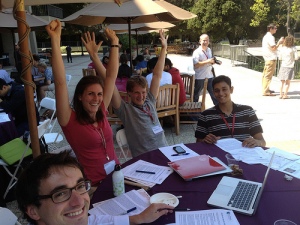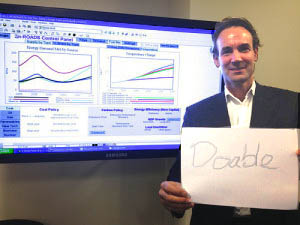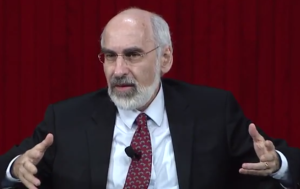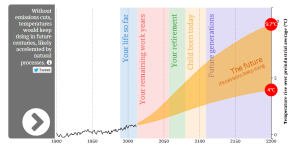By Drew Jones, Climate Interactive Co-Director
How can we build political will to take responsibility for climate?
It is time to invest in grounded hope.
We should inoculate the world with an attractive, rigorous, comprehensive path toward climate success, as a means of helping people see and own the climate challenge in the first place.
 I think we need to see the solution in order to see the problem.
I think we need to see the solution in order to see the problem.
Sounds backwards, right?
We’ve flipped the cause-and-effect for too long. We’ve mostly been saying (think “An Inconvenient Truth”), “climate disruption is a huge problem. So let’s solve it. Every small action counts.”
But it isn’t working. Too many people think, “it’s an overwhelming problem without a clear solution. I give up.”
We’ve seen the alternative work first hand. Over the past year, I’ve facilitated large groups of Stanford graduate students, international energy execs, a climate-and-business advisory panel in Washington, D.C. and others, and asked them to chart out viable solution paths and then see the impacts immediately in our simulators En-ROADS and C-ROADS.
They dream, grieve, learn, dream again, then emerge a bit readier to take responsibility for the problem, roll up their sleeves and try something a bit more ambitious. As Gerard Moutet of the French oil company Total said, “It now seems challenging but possible.”
Challenging but possible. Grounded hope. Continue reading →










